Introduction

Today marks the second time we will be using our new Air Cooling test platform. This platform is built around a Ryzen 7 2700X processor with a manufacturer claimed TDP of 105W. This should provide a reasonable usage case that we are likely to see with some of today’s most demanding air-cooled CPU coolers. So, on the bench today is the Iceberg Thermal IceSLEET X7 Dual which is part of Iceberg Thermal’s IceSLEET series.
Iceberg Thermal IceSLEET X7 Dual Overview



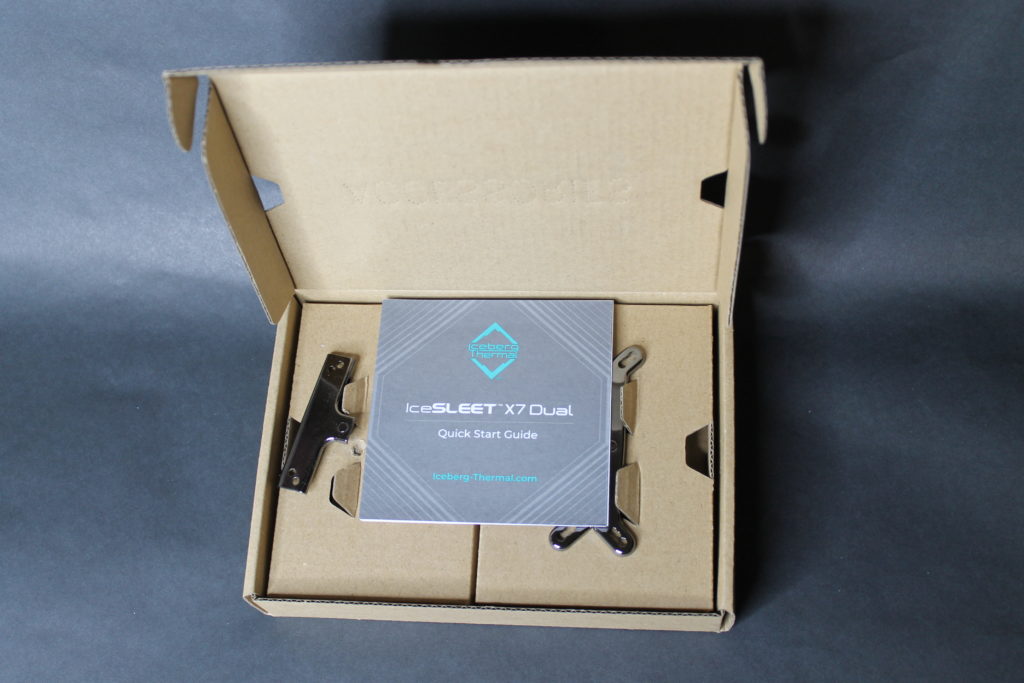
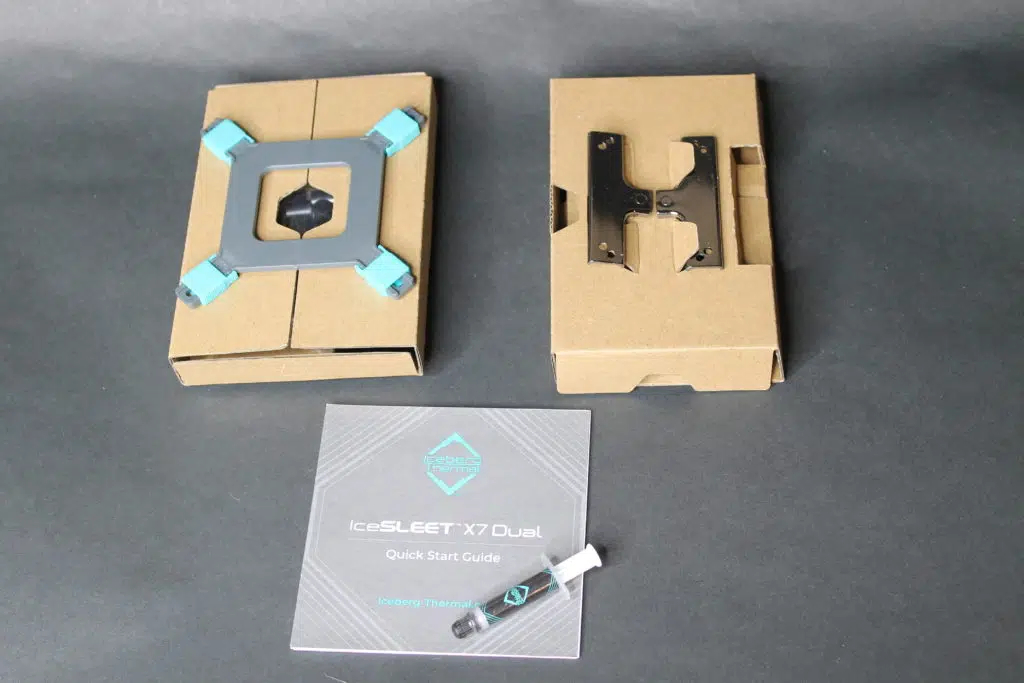
The Iceberg Thermal IceSLEET X7 Dual cooler is an air cooler that is designed to work on a wide variety of sockets, including Intel’s LGA775/115x/1200/1366/2011-0/2011-3/2066 and AMD’s AM2(+)/AM3(+)/AM4/FM1/FM2(+). While this covers most high-end desktop processors, it is not compatible with the Threadripper’s TR4 socket (which is probably a good thing given its rated 225W maximum dissipation).
Heatsink
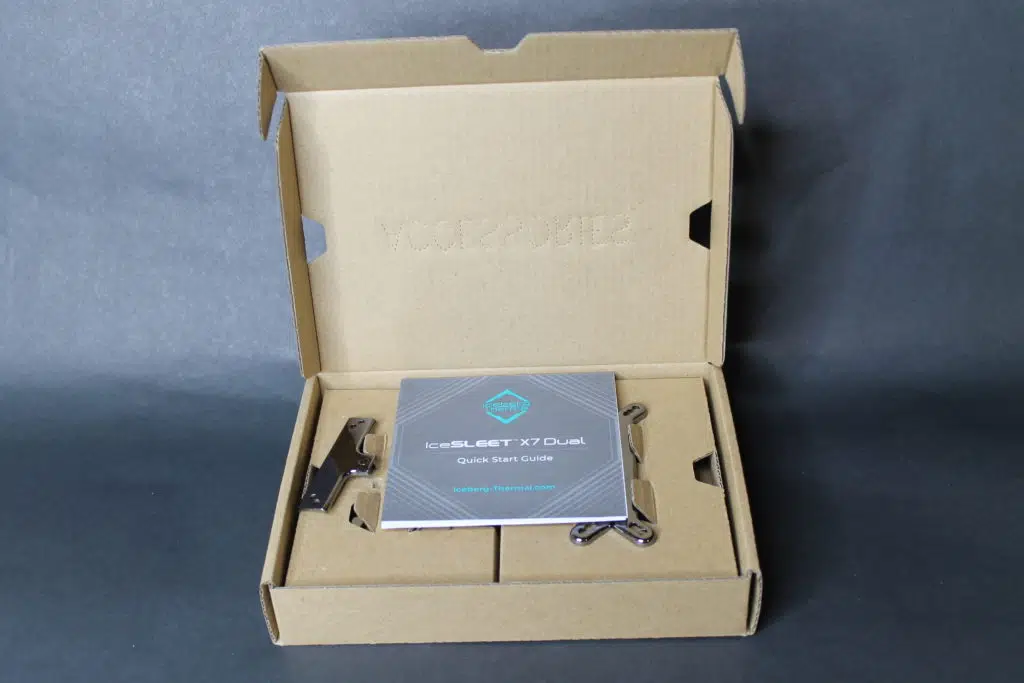
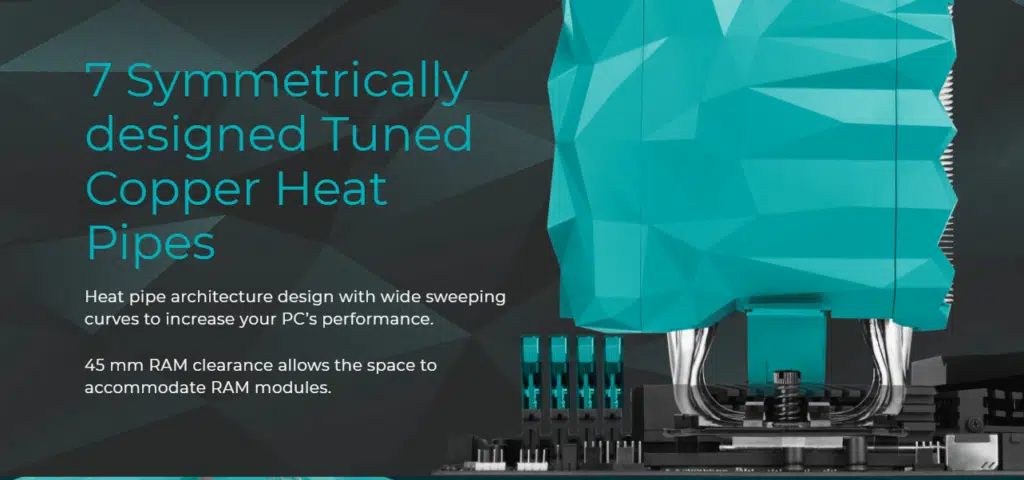
The Iceberg Thermal IceSLEET X7 Dual utilizes what Iceberg Thermal calls an oversized heatsink that covers “the chipset for Maximum Heat Dissipation”. This is in addition to the “Heat pipe architecture design with wide sweeping curves to increase your PC’s performance”.

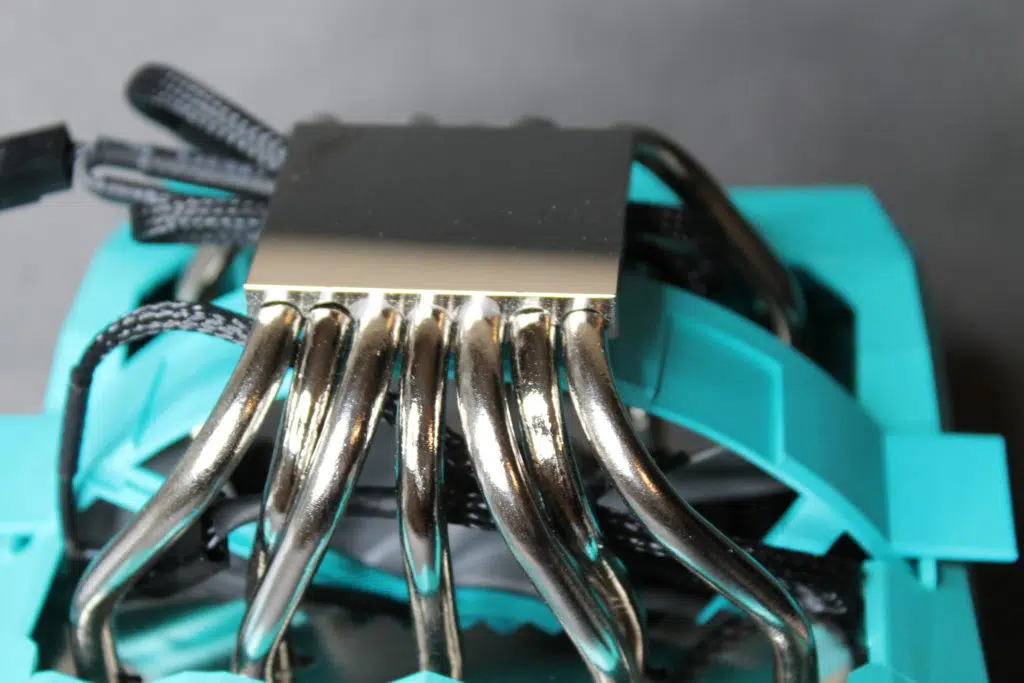
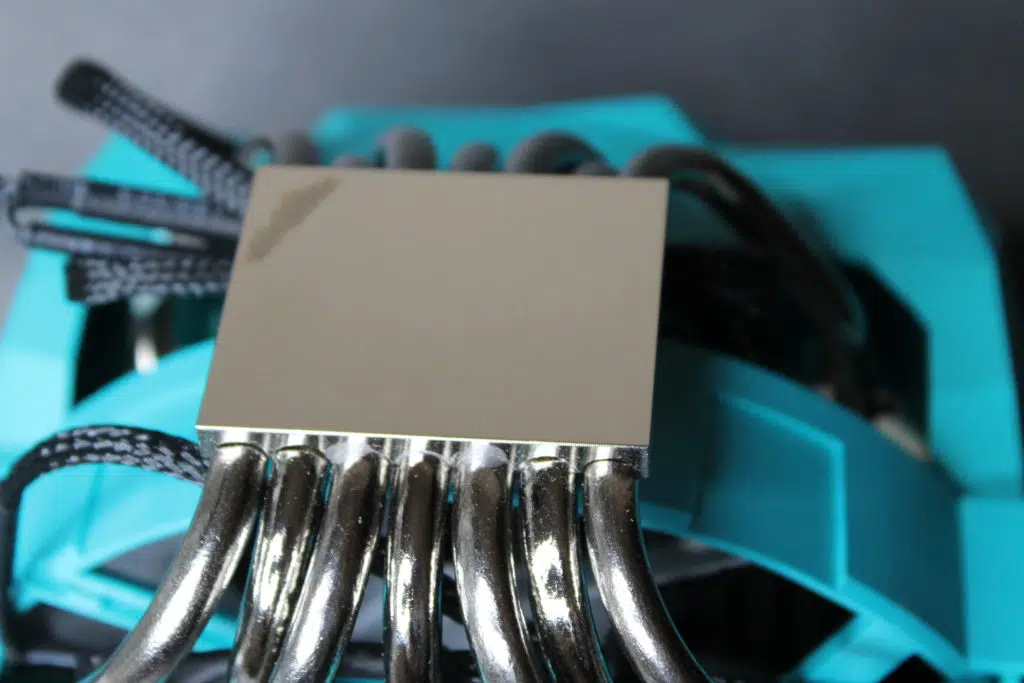
The heatsink is constructed from a nickel-plated interface and copper heat pipes with aluminum fins. The IceSLEET X7 Dual sports seven heat pipes that are 6mm in diameter.
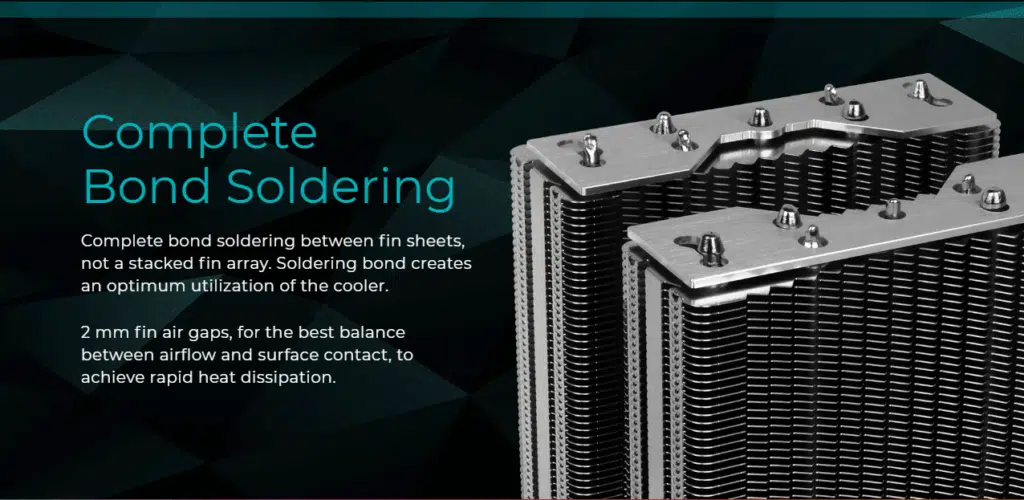
The fins on the IceSLEET X7 Dual have a unique layout and construction to them as diagrammed above.

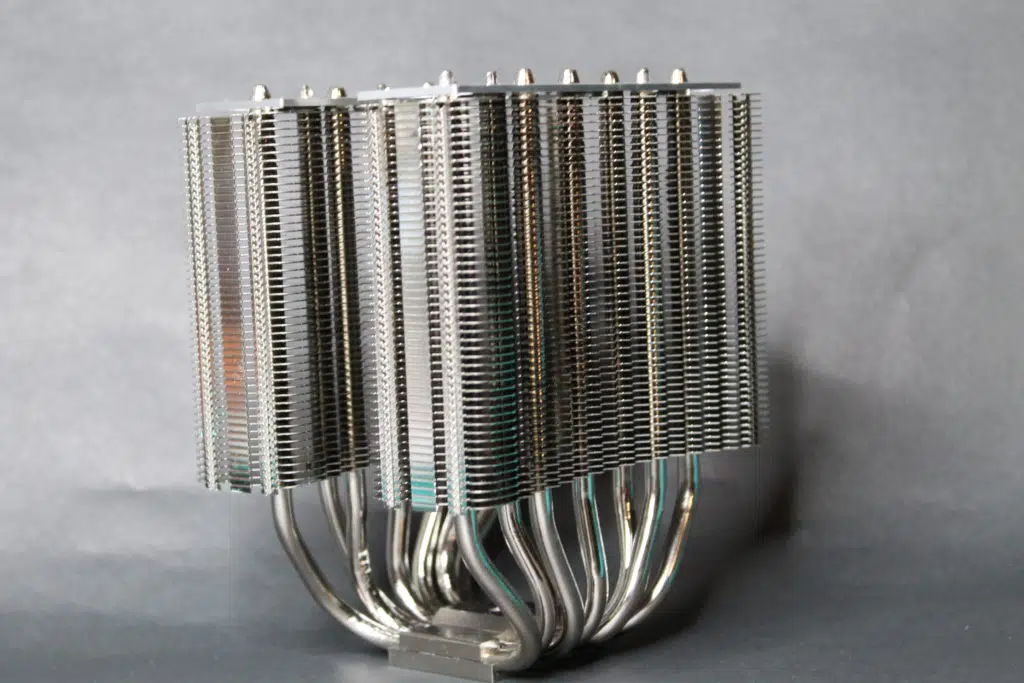

The second unique part of the construction of IceSLEET X7 Dual are the fins themselves. In this case, Iceberg Thermal has gone for a design that utilizes 98 fins that are 0.4mm thick. These fins are spaced 2mm apart for what Iceberg Thermal describes as the “best balance of airflow and surface contact”. Overall, the heatsink weighs in at 1158g with the fans. So, in case of emergency, you can bludgeon someone to death with this HSF.
Fan
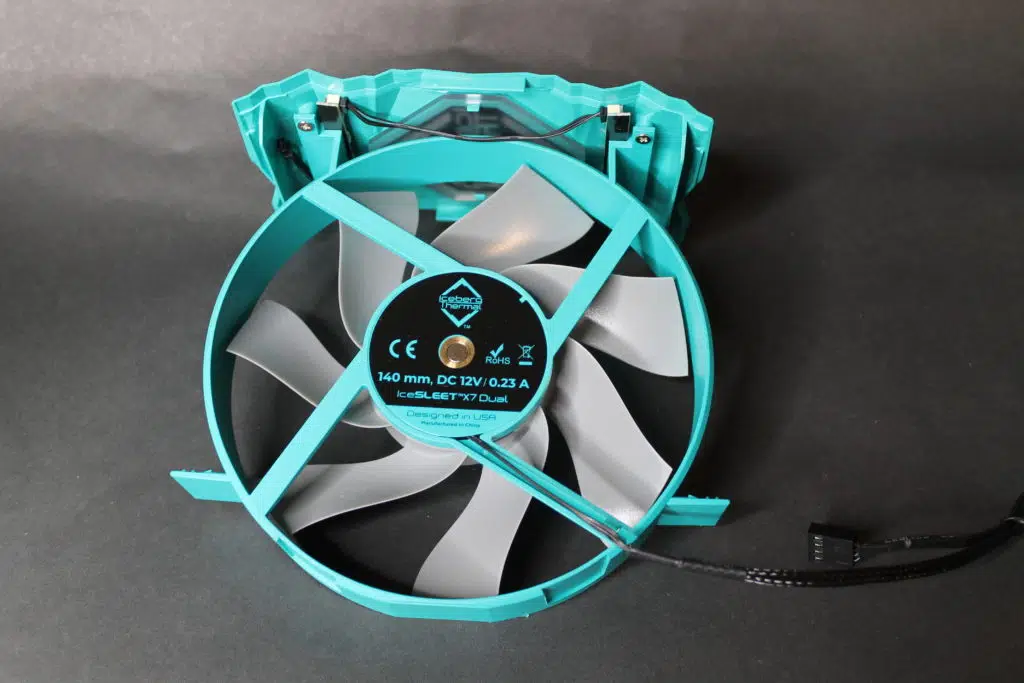

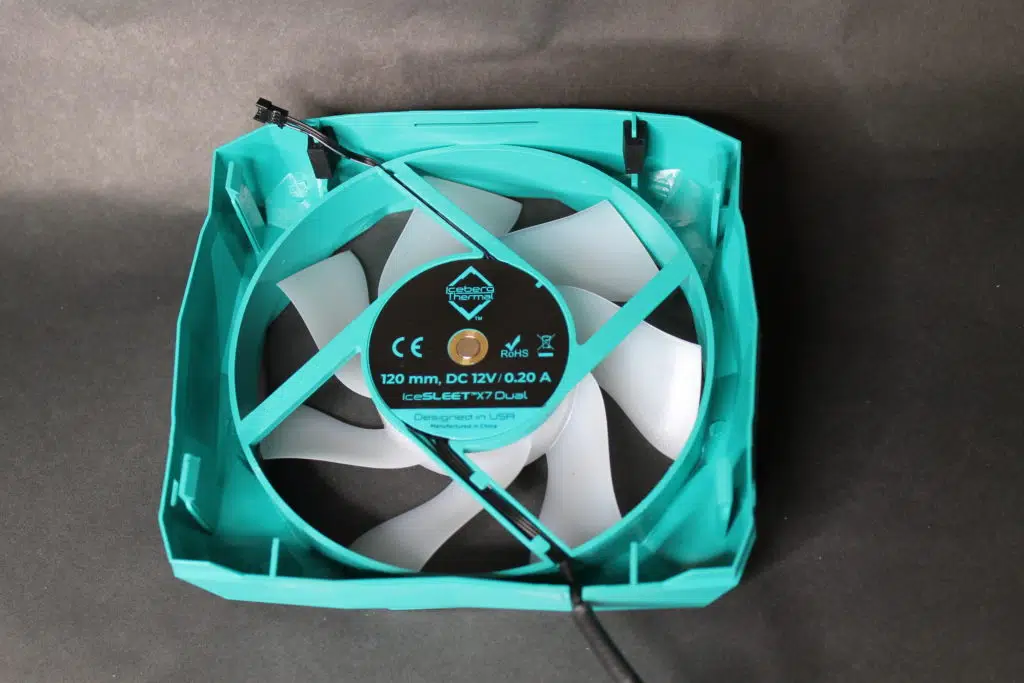
The included fans look very similar to Iceberg Thermal’s IceGALE line of fans. The included fans with our heatsink today are 120mm and 140mm in size. These FDB fans are rated at 0.20A for the 120mm unit and 0.23A for the 140mm unit. The listed MTTF is >150,000 hours. The fan supports a fan speed of 500 to 1850 for the 120mm model and 500 to 1600RPM for the 140mm model at a reported noise level of 0 to 38 dB(A) thanks to the Auto START/STOP feature. The stated airflow maximum is 76 CFM for the 120mm fan and 96 CFM for the 140mm fan with a static pressure maximum of 2.8 mm H2O on the 120mm fan and 2.65 mm H2O on the 140mm fan. Lastly, these fans use a 4-pin PWM connector.
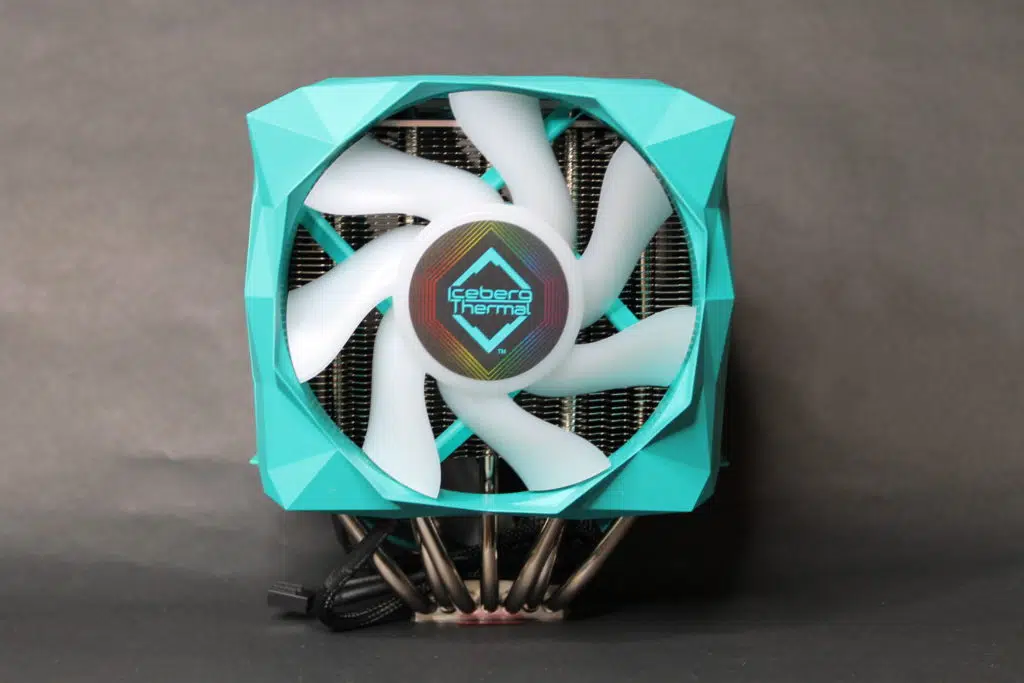



The fully assembled HSF can be adorned with whatever RGB pattern that you like via the integrated RGB sync ARGB control. Even without the frag harder disco lights, the housing for the IceSLEET X7 Dual is definitely different from what we usually see. The question will be though; is different good?
Let’s move on now to our test setup and installation of the Iceberg Thermal IceSLEET X7 Dual.
